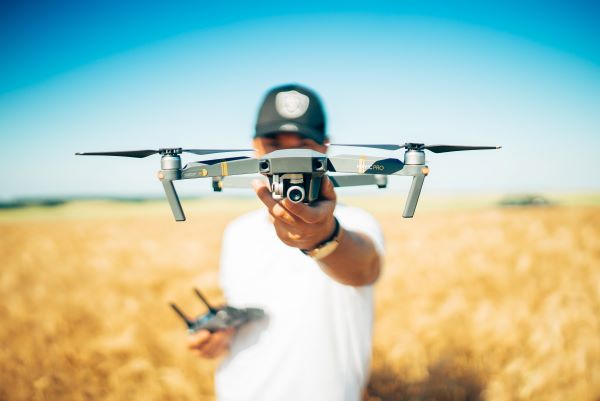The world of agriculture could see a significant shift in the next decade. Using aircraft to spray crops has been a method available to farmers for a long time, and now that task could become easier. Drone technology has evolved, and some farmers in South Africa are finding it useful for their crops. Could the rest of the world find this technology beneficial?
What Are Crop-Spraying Drones?
Crop-spraying drones are taking the difficult and laborious parts of farming and making them more manageable. These drones can hover over a field of crops and spray fertilizer, seeds, pesticides, or whatever farmers need to do. People have been using aerial technology for their crops for about a century.
In 1922, the United States conducted the first crop dusting flights in Dayton, Ohio, using U.S. Army technology. Historians consider Abraham Karev to be the father of unmanned aerial vehicles (UAVs) because of his drone invention in the 1970s.
By the 1980s, companies like Yamaha were making drones for agricultural use. Since then, the technology has evolved further, and farmers are starting to reap the benefits.
How Are These Drones Helpful?
These drones can positively change farming’s future. Some of the benefits of crop-spraying drones include:
- Targeted application: If a farmer has different crops on their land, the plants are likely to need different kinds of pesticides and herbicides. For example, one set of crops may need organic pesticides while another needs inorganic pesticides. Drone technology will provide a more targeted approach to ensure the two different pesticides land where they are supposed to be.
- Greener technology: A significant benefit of drone technology is its environmental benefits. Using planes to spray crops requires fuel and emits carbon. Most drones, however, are electrically powered, rendering gas unnecessary.
- Less-expensive operations: Like other technologies, crop-spraying drones have become more affordable since their inception. Farmers say they are a cheaper option than hiring a crop-dusting plane to do the work. Learning to fly a drone poses less risk to human life than a manned aircraft does.
- More crops, less time: With other aerial technology like planes, farmers could only spray one section at a time, which could be time-consuming. With drones, they can now cover their crops more efficiently. Farmers could use two or three drones simultaneously to spray the required areas. This technology could lead to a higher yield of crops for food, which will be beneficial as the world heads toward 8 billion people.
Do Other Countries Use These Drones?
Drone technology for agriculture is starting to expand to other parts of the globe. Crop-dusting drones are becoming the next big thing in agriculture to make farming easier. Here are some countries taking advantage of this UAV technology:
- United States: The first autonomous crop dusters in the U.S. appear to be making their debut soon. An agricultural services provider, Wilbur-Ellis, has its drones in the approval process and the company expects them to become commercially available in 2023.
- China: China leads the world in producing many crops, including wheat, rice, potatoes, sweet potatoes, and more. As a world leader in agricultural production, China is turning to drone technology for its crops. In fact, agricultural drones constitute between 12% and 17% of commercially available drones in China.
- Japan: Countries like Japan have been developing these drones since the 1990s. UAV technology helps with rice production since farmers must flood the fields with water. Motor vehicles are unable to enter a flooded area like this, so drone technology helps out the farmers immensely.
Agriculture for the Future
The future of farming looks to be in the hands of crop-spraying drones. All six continents with people produce food and all 8 billion people on Earth need that food to survive. Farmers are finding more efficient ways to produce crops as the population grows. One beneficial way is by using UAV technology.
With crop-spraying drones, farmers can target their crops better with fertilizer and pesticides, save money, and reduce their carbon footprint. These technologies have become popular in South Africa, and countries on other continents are beginning to utilize them, too.
 Jane is an agriculture and environmental journalist and the founder and editor-in-chief of Environment.co, where she covers sustainability and eco-friendly living.
Jane is an agriculture and environmental journalist and the founder and editor-in-chief of Environment.co, where she covers sustainability and eco-friendly living.










[…] Source link […]
Comments are closed.